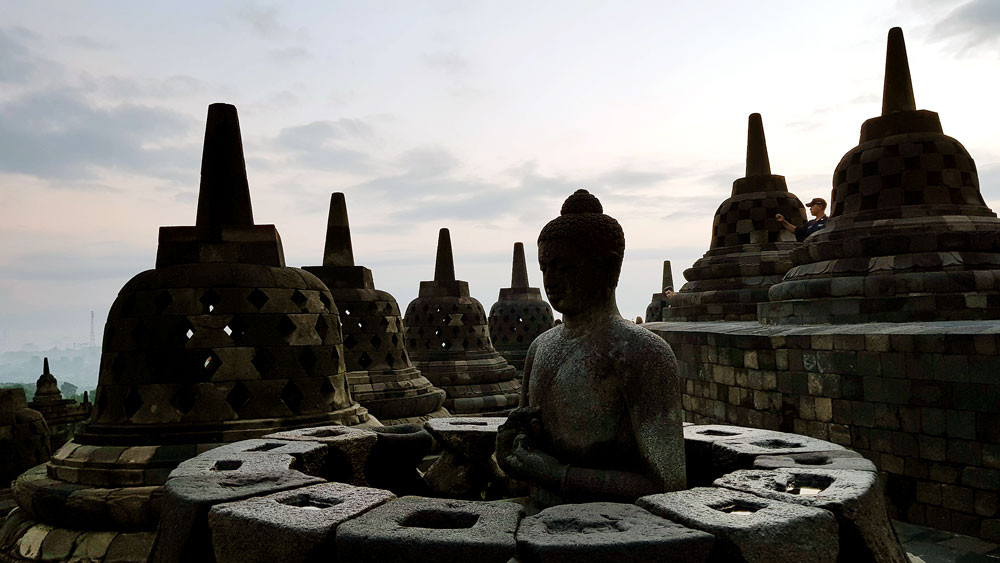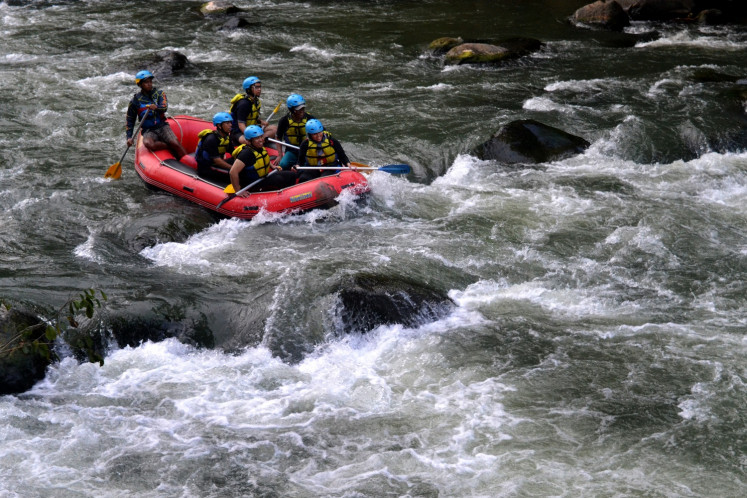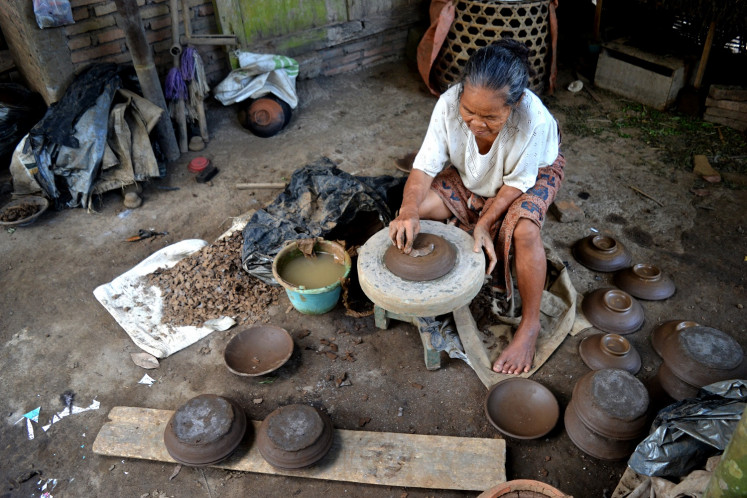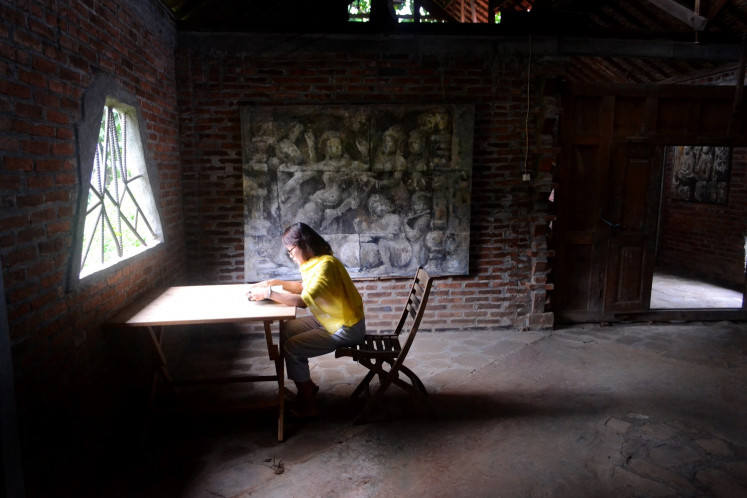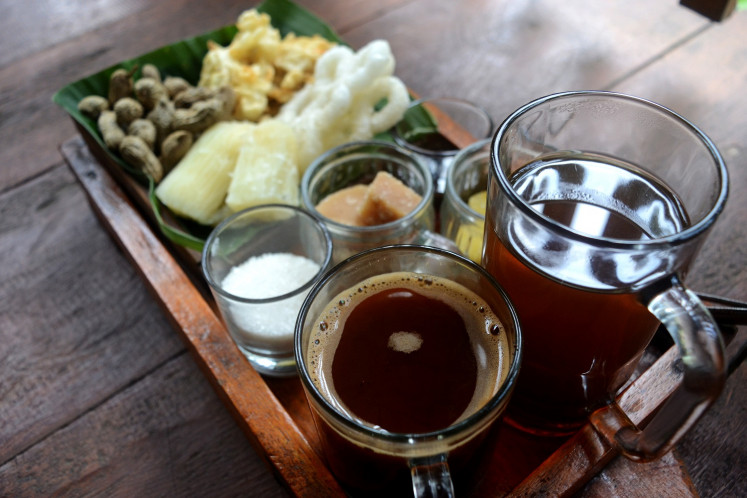Popular Reads
Top Results
Can't find what you're looking for?
View all search resultsPopular Reads
Top Results
Can't find what you're looking for?
View all search resultsFive things to do in Borobudur, besides visiting the temple
After visiting the Borobudur temple, one can explore the surrounding area, which offers various activities, such as rafting or the making of earthenware products.
Change text size
Gift Premium Articles
to Anyone
R
ecognized by UNESCO as a world heritage site, the Borobudur temple in Magelang, Central Java, is considered a must-see for travelers visiting the area.
Located on Menoreh Hill and surrounded by the four mountains of Sindoro, Sumbing, Merapi and Merbabu, the temple also sits between the Elo and Progo rivers. Along with the temple’s majestic beauty, the natural landscape offers a view like no other.
After a visit to Borobudur temple, exploring the surrounding area would be the next option for travelers. Traditional lives with customary rituals, arts, performances and handicrafts are still intact in villages nearby. Various activities also await, such as the ones listed below.
1. Rafting along the Elo and Progo rivers
Rafting on the Elo River. (JP/Stefanus Ajie)To enjoy rafting along the Elo and Progo rivers with their strong currents and beautiful scenery, renting a rubber boat costs Rp 1 million (US$71).
The Elo River is ranked Grade II (medium) in difficulty levels, which is suitable for beginners. The rafting route starts from Pare village and ends at Ngentak. The average duration for the route is two to three hours covering a distance of 11 kilometers.
During the annual Elo River Festival rafters can enjoy various traditional art performances and decorated boats in a parade.
While on the Progo River, rafting can be done in two locations: the upper and lower routes. The upper route is Grade III and 9 km in distance, taking two hours to complete. The lower route has a higher difficulty level, ranging from Grade III and Grade IV downstream of Temanggung regency. The route is about 26 km long and takes five hours to complete.
All activities are conducted under the supervision of professional guides.
2. Exploring villages around Borobudur temple
With the help of horse-drawn carts or safari jeeps, tourists can gaze at villages around Borobudur temple. Bikes are also available for tourists to rent.
Among the popular destinations in the area include the Junkyard Autopark, Gereja Ayam (the Chicken Church) and Punthuk Setumbu hill.
Tourists are invited to drop by at balkondes (village economy halls) in 20 different villages in the area. Balkondes also function as rest areas for tourists where they can try the village’s culinary specialties, buy handicrafts, or stay overnight in cottages featuring architecture of the past.
Read also: Borobudur temple to provide special route for foreign tourists
3. Making earthenware at Klipoh
A resident of Klipoh village in Magelang makes earthenware products. (JP/Stefanus Ajie)Klipoh, located about 5 km from Borobudur, is a village renowned for its earthenware products. On the walls of Borobudur, one of the reliefs depicts the making of these products.
For generations residents here have created kitchenware, plates, mugs, ashtrays and home decorations from clay. Approaching the village, one can easily notice smoke coming out from furnaces while women work with clay in front of their houses.
In Klipoh, tourists are welcome to create their own earthenware products. A number of production centers also offer classes for tourists to learn how to make them.
4. Visiting art galleries
A painting depicting the Borobudur temple by Sony Santosa at Eloprogo Arthouse in Magelang, Central Java. (JP/Stefanus Ajie)Recently, hotels around the Borobudur temple have begun to offer their venues as art galleries showcasing works of artists from various cities in Indonesia. Paintings, statues and other artwork are often displayed in hotel lobbies, restaurants, cafes and corridors.
The area is also home to a number of art spaces that regularly host art exhibitions or events. There are Galeri Unik dan Seni Borobudur Indonesia (Borobudur Unique and Art Gallery Indonesia) and Lima Gunung Museum, belonging to veteran artist Sutanto Mendut in Mungkid, located 4 km from Borobudur. Other art studios and galleries include Padepokan Apel Watoe, Limanjawi Art House and Eloprogo Art House.
5. Sipping Menoreh coffee
Coffee with traditional snacks in a coffee shop on Menoreh Hill. (JP/Stefanus Ajie)In the past, Menorah Hill was known as the hideout of Prince Diponegoro’s troops during the war against the Dutch. After the war, the Dutch administration used the hill to grow coffee and, until now, coffee is still a commodity of the area.
The coffee production center is located in Sidoharjo and Gerbosari villages in Kulonprogo regency, while places such as Kerug Batur and Majaksingi are also known as coffee producers.
Coffee cultivated from the Menoreh Hill can be enjoyed in coffee shops around Borobudur temple. In coffee shops located on Menoreh Hill, tourists can savor cups of coffee with traditional snacks amid the beautiful scenery. (yun/wng)

